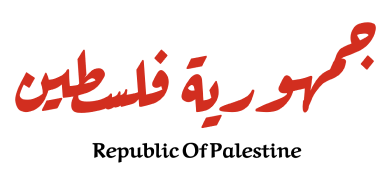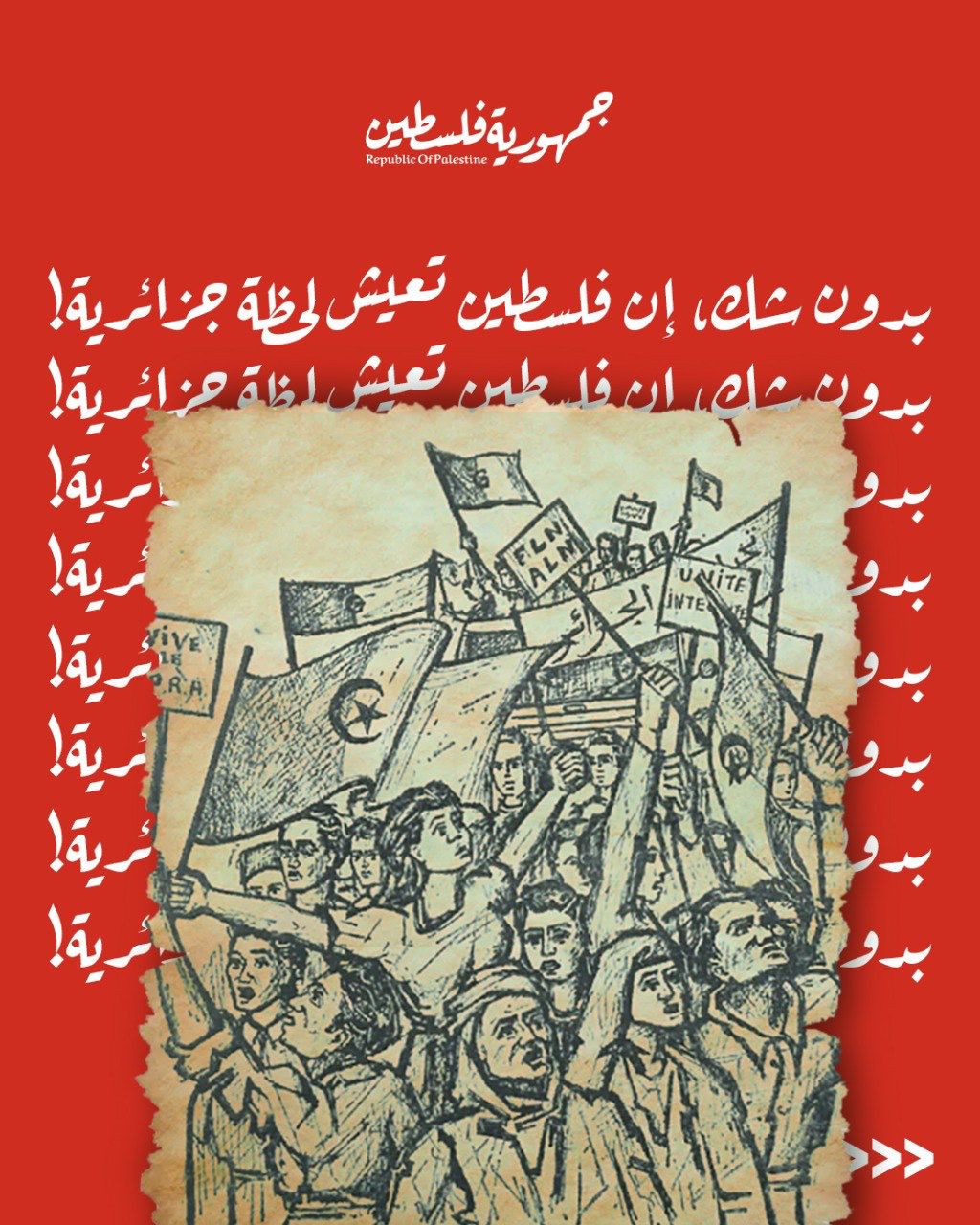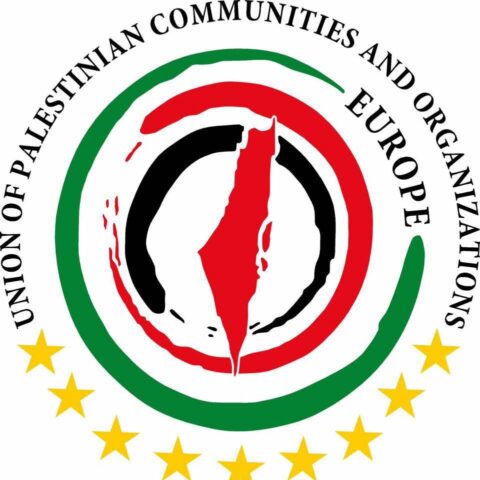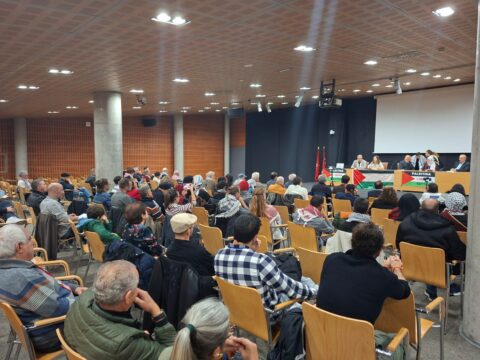By: Mousa Alsadah
On November 1st, 1954, a Monday evening, 1,200 Algerian fighters launched simultaneous attacks across various conflict zones throughout Algeria. The fighters were relatively underarmed, possessing approximately 400 firearms. Yet the number of resistance operations reached thirty, which resulted in the deaths of thirty European settlers and injuries to twenty-four, alongside material losses amounting to millions of French francs. A day earlier on October 31st, the call for revolution had been announced. With the printing and distribution of what came to be known as the November 1 Declaration After Midnight (overseen by leader Mohamed Boudiaf), operations were to begin after nightfall. This date was chosen for political and military reasons, coinciding with the Christian holiday of La Toussaint and the weekend when French enemy officers were on leave.
Seventy years later, with the same number of resistance fighters, on the morning of October 7, and coinciding with the Jewish holiday of Sukkot over that weekend, a similar event unfolded in Palestine, but one that bore its own historical stamp. Military operations coincided with the broadcast of the statement, Flood of Al-Aqsa, delivered by leader Mohammed Deif.
In his book, The Algerian Revolution in Its First Year, Dr. Mohammed Al-Arabi Al-Zubairi argues that the significance of the years following the November Declaration was not merely that the revolution was armed. The Algerian people had never laid down their arms since the first French soldier stepped on their land. Instead, the importance, according to Al-Zubairi, lay in the number of positive outcomes achieved in a very short time in world-historical terms. By his estimations, Algeria was under colonial rule for 132 years, while the liberation war (the Algerian War of Independence) after the November 1st Declaration lasted seven years, amounting to only about 6% of the total duration of French occupation.
In other words, events changed in a revolutionary and accelerated manner, as if history had been transformed by a centrifuge. Eight months after the Flood of Al-Aqsa statement, any observer can conclude that the Palestinian struggle has made advances, marked by shifts in narrative and both material and ideological losses for the enemy—something not seen in seventy-six years. However, this is certainly not enough, and importantly, these results would not have been possible without significant sacrifices.
In the struggle over terminology, it is inappropriate, both intellectually and emotionally, to speak of losses, as some intellectuals of Arab regimes might suggest. This approach fabricates an account of profit and loss as if we are engaged in business rather than a social and historical movement. What we offer are sacrifices: that is to say, that which is incommensurable in material terms. This is one of the greatest lessons that the people of Gaza teach humanity: the family of a martyr or a wounded person pulled from the rubble does not speak like a wealthy Arab in the Gulf, who calculates the financial losses of homes and possessions. The evidence is abundant; they speak directly of steadfastness to protect a collective and societal gain, and their narrative revolves around the resistance, Al-Aqsa, Palestine, and liberation. These matters are not measured by calculating profit and loss but fall within an entirely different ethical and intellectual framework.
What we offer are sacrifices: that is to say, that which is incommensurable in material terms. This is one of the greatest lessons that the people of Gaza teach humanity: the family of a martyr or a wounded person pulled from the rubble does not speak like a wealthy Arab in the Gulf, who calculates the financial losses of homes and possessions.
We can also infer that the psychological impact of revolutionary sacrifice on an individual is different from that of abstract material loss. This is something that the modern European mentality fails to grasp, which imposes its psychological calculations of loss in lives and property onto us through the framework of psychology itself. While one cannot deny the accumulated psychological impact on generations of children in Gaza due to the crimes of Zionism, it is crucial to recognise that we are faced with a project that modern psychology does not fully comprehend. The concepts of steadfastness, sacrifice, and commitment to a cause that transcends the individual generate a psychological charge that cannot be compared to the impact from environmental or humanitarian disasters.
This is the conclusion reached by Frantz Fanon in the fifth anniversary of the November 1 Declaration in his book The Algerian Revolution in Its Fifth Year. According to Fanon, despite all the French colonial violence against the Algerians, their suffering led only to the emergence of a “spiritual community which constitutes the most solid bastion of the Algerian revolution”, rather than to the loss and disintegration of the people and society. It is in this sense that we must understand the revolutionary leader Imad Mughniyeh’s assertion that the spirit is fundamental. This is also in keeping with Dr. Saif Da’na’s observation that in this social and historical movement, those who prevail are those who can endure harm and remain steadfast; that is, those who can sacrifice, while the calculations of profit and loss belong to the logic of the enemy front.
A point of difference today is the acceleration of time, attributed to the speed of communication and transportation in our current era. For example, compare how long it took for operations to commence after the initial statements: what took two days in Algeria has been accomplished in mere hours in Palestine. Similarly, the narrative shift that took years in Algeria has been achieved in months with the Flood of Al-Aqsa.
It is not just symbolic comparisons that suggest Palestine is experiencing its own “Algerian moment” today. Rather, the Algerian moment for Palestine arises in comparing the material foundations that led to the revolution, its victory, and the liberation of Algeria, as well as the fact that the two settler-colonial models—Zionist and French—bear striking similarities that are seldom discussed.
Like all settler projects, the community of settlers and colonisers is divided into several categories, which fall under the political division of a colonial right and left. In the history of French colonialism, this division has manifested in the more pragmatic (and arguably more cunning) political bloc in Paris and the more radical political bloc of settlers in occupied Algeria, known as “French Algeria”, who are exemplified by the “Pieds-Noirs” movement of settlers born in occupied Algeria.
This structure is reflected with more complexity in the Zionist model. For simplicity, the political bloc of settlers in the West Bank and the religious right, represented by movements like “Hilltop Youth”, parallel the settlers in Algeria. Meanwhile, “Tel Aviv” and its liberal elite correspond to the relative rationality of the Parisian leadership and reach as far as the Zionist political bloc in the United States.
The crucial point here is that this division of right and left does not fundamentally make the two sides different—they do not differ so much as they dissimulate. In Algeria, both the Parisian bloc and the settlers agreed on the notion that “the Mediterranean Sea cuts through France just as the Seine River runs through Paris”, implying that Algerian land is an inseparable part of French territory. They also converge in their denial of the historical existence of the Algerian people, which is a fundamental point justifying the origins of the settler project, regardless of their differences under its umbrella.
This was brilliantly illustrated by the Italian director Gillo Pontecorvo in the film The Battle of Algiers, where a scene captures leftist journalists questioning Colonel Philippe, who violently suppressed the revolution through a concerted policy of torturing resistance fighters to death. When, in turn, Colonel Philippe confronted the journalists who were shedding crocodile tears over the torture of Arab leaders and asked them if they would accept relinquishing French Algeria and leaving it, all of them—left and right, liberals and socialists—fell silent.
The Zionist question is no different. Take the case of the West Bank, its occupation, and the overall maintenance of the occupation: these issues absolutely negate any substantive differences within the colonial camp, but they are also some of the most prominent causes of internal conflict and disagreement. Exploiting the division between settlers was one of the keys to the Algerian victory, and this is precisely what the leadership of the Palestinian resistance is masterfully employing today.
In the 1930s, a sharp conflict arose between the colonisers in Paris and the settlers in Algeria. While the British were in the process of eliminating Sheikh Izz ad-Din al-Qassam [a key figure for armed Arab resistance groups] and suppressing the Great Revolt in Palestine, Algerian protests reached their peak, albeit revolving around moderate demands for equal political rights with the settlers. This led to the so-called Blum-Viollette Project, spearheaded by the leftist Popular Front government, which proposed granting voting rights to a select elite of around 20,000 Algerians. In other words, the project sought to create a privileged elite among the Algerian people that would cooperate with the coloniser. However, the settlers in Algeria thwarted this project, rejecting any form of equality with Algerians.
Dr. Al-Zubairi describes this failure as “a stroke of luck for the Algerians”, noting that the left’s plan was a “diabolical scheme aimed at depriving the Algerian people of their political rights and preventing the national movement from evolving”. The thwarting of this project exposed both the leftist government’s inability to control the situation and its rhetoric as hollow. Consequently, the idea of complete separation from France became a central focus for the Algerian national movement, evolving into a broad popular option that resonated all the way to Paris.
In response, Charles de Gaulle rushed to deliver a speech in Constantine in December 1943, announcing an increase in the representation of Muslims in local councils and granting citizenship to 40,000 Algerians, in an attempt to quell anger and implement an assimilation strategy seeking to assimilate Algeria through its own youth.
In reality, de Gaulle was essentially telling the Algerians to accept this strategy and the grant of citizenship to 40,000 individuals or face the fate of 40,000 dead Algerians. This is exactly what happened. It was too late for de Gaulle’s project, as the Algerian national movement—despite its internal differences—had become an unstoppable force, only halted by the May 1945 massacres during which the French committed genocide by killing 45,000 Algerians in just one week.
The massacre was a turning point for the different Algerian factions. As is the case with all colonial projects, Algerians were politically divided into two camps: one that was committed to armed struggle and revolutionary violence and another that pursued a pacifist agenda and sought integration with France. The latter were led by the indecisive Ferhat Abbas [an Algerian politician who pursued a reformist and conciliatory agenda in relation to France] and the so-called Abbasists, who quickly branded the revolution in its first year as terrorism. Meanwhile, the majority of collaborators with the occupier joined Messali Hadj and the so-called Movement for the Victory of Freedoms, which parallels the model of Yasser Arafat, Oslo, and Mahmoud Abbas today. These collaborating factions opened the gates for a renewed attempt by de Gaulle to reorganise the political landscape of French Algeria, this time by integrating this elite and granting it privileges in local councils, where the votes of nine Algerians equalled the vote of one French settler.
the majority of collaborators with the occupier joined Messali Hadj and the so-called Movement for the Victory of Freedoms, which parallels the model of Yasser Arafat, Oslo, and Mahmoud Abbas today. These collaborating factions opened the gates for a renewed attempt by de Gaulle to reorganise the political landscape of French Algeria.
This historical background forms a common thread between Algeria and Palestine, paving the way for two eruptions: the declarations of November 1954 and Al-Aqsa Flood of 2023. Every crisis faced by the Palestinian Authority and the Oslo Accords had parallels with the Movement for the Victory of Freedoms and the Messalist project. On another front, the conflict over the shape of French Algeria between settlers and colonisers in Paris reached an unprecedented level, much like the ongoing struggle over the shape of the Zionist state today between the right and the left.
The significance of Palestine’s Algerian moment is not limited to the conditions of the liberation war itself but extends to the postwar conditions on a regional and global scale. France’s defeat at the Battle of Dien Bien Phu in Vietnam in May 1954 and the wider crisis in French Indochina had revealed the vulnerability of colonial armies, proving that their defeat was possible. Prior to this, the July 23 Revolution in Egypt, led by Gamal Abdel Nasser, had provided significant support to the Algerian national movement in terms of financing, media coverage, and military aid. This support included weapon supplies to Algeria via Tunisia and Morocco, which created a crisis for France and prompted the establishment in 1957, of what was known as the Morice Line—a series of walls and barbed wire along the Tunisian and Moroccan borders to prevent the flow of fighters and weapons.
The years of the Algerian revolution were marked by a combination of great sacrifices, significant military achievements, and major gains. The military actions plunged the French into a state of madness, resulting in unprecedented campaigns of arrests and torture that pushed the Algerians into an overdetermined phase of resilience, effectively ending any room for colonial settlements and manoeuvres. This turmoil also led to a crisis among the French army, the French Government, the settlers’ authority, and other political parties as infighting erupted in the wake of repeated failures. Simultaneously, there was a growing wave of international recognition for the legitimacy of the independent Algerian government.
Today, in the second year after “Al-Aqsa Flood,” Palestine is at a similarly decisive stage. Internally, Israel is experiencing a political crisis, though the sound of battle currently overshadows it. Externally, its imperial backer—the U.S.—faces unprecedented tension between empire maintenance and rising domestic calls for restraint.
Without a doubt, Palestine is living its Algerian moment. But that does not guarantee an Algerian outcome. Success demands action. The Algerian revolution did not win from mountain strongholds alone—it triumphed when it reached the cities. As martyr Larbi Ben M’hidi said: “We must throw the revolution into the street so the people can carry it.”
Though that has yet to fully happen in Jerusalem and the West Bank, there is no alternative but to take the revolution there. History offers us a predictive tool: Palestinian uprisings have always followed moments of extreme deadlock—and such deadlock, which Israel itself will manufacture, will create the conditions for another intifada.
As for waiting passively for deliverance while a part of the Arab world avoids sacrifice, history offers a clear rebuttal. The years following the Algerian declaration were defined by ending complacency, fighting collaborators, and seizing the moment. These must be the contours of the coming Palestinian phase.
Without a doubt, Palestine is living its Algerian moment. But that does not guarantee an Algerian outcome. Success demands action. The Algerian revolution did not win from mountain strongholds alone—it triumphed when it reached the cities. As martyr Larbi Ben M’hidi said: “We must throw the revolution into the street so the people can carry it.”






